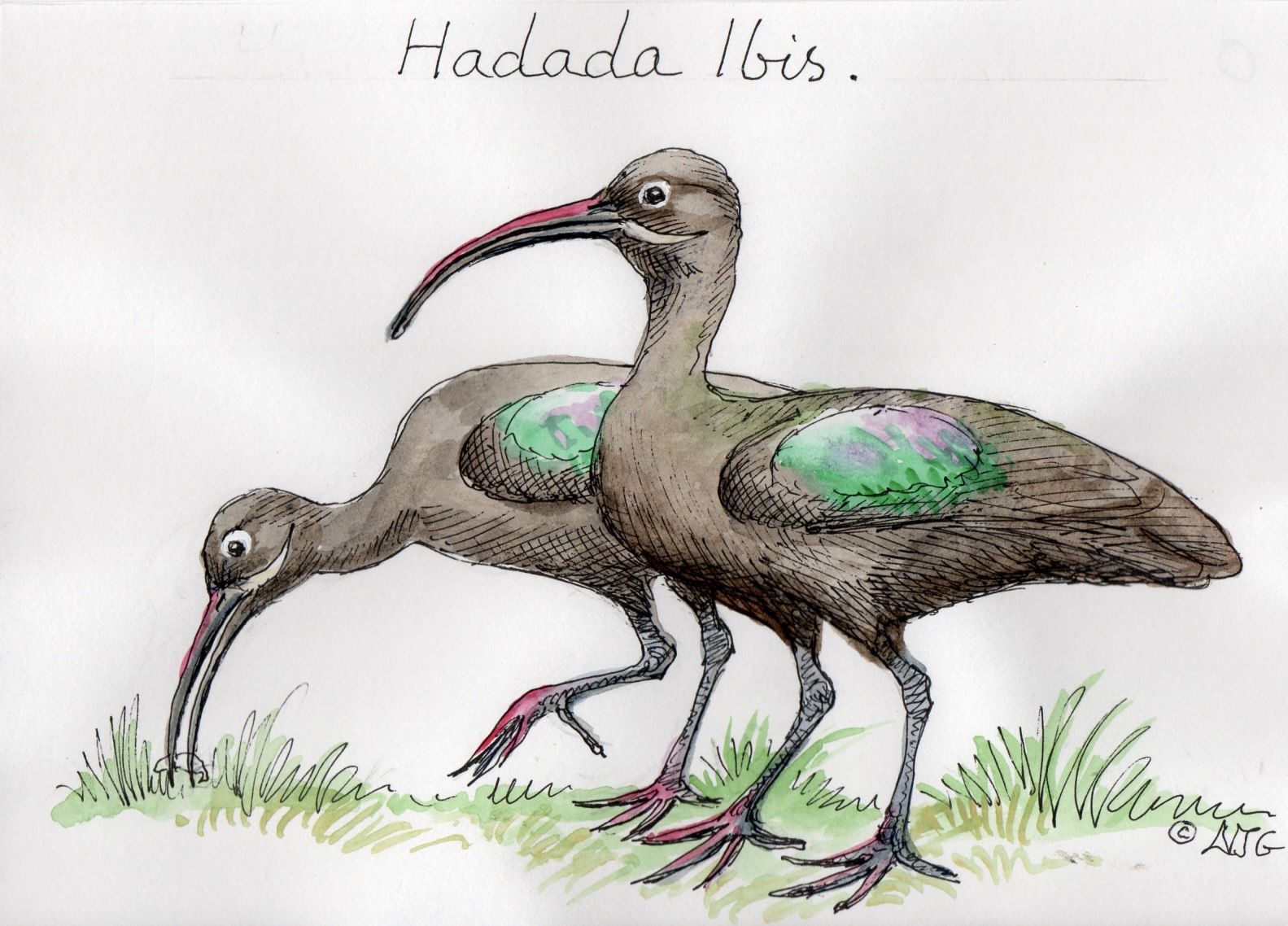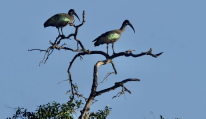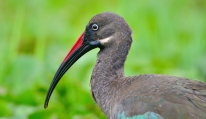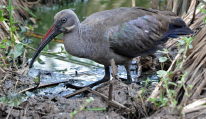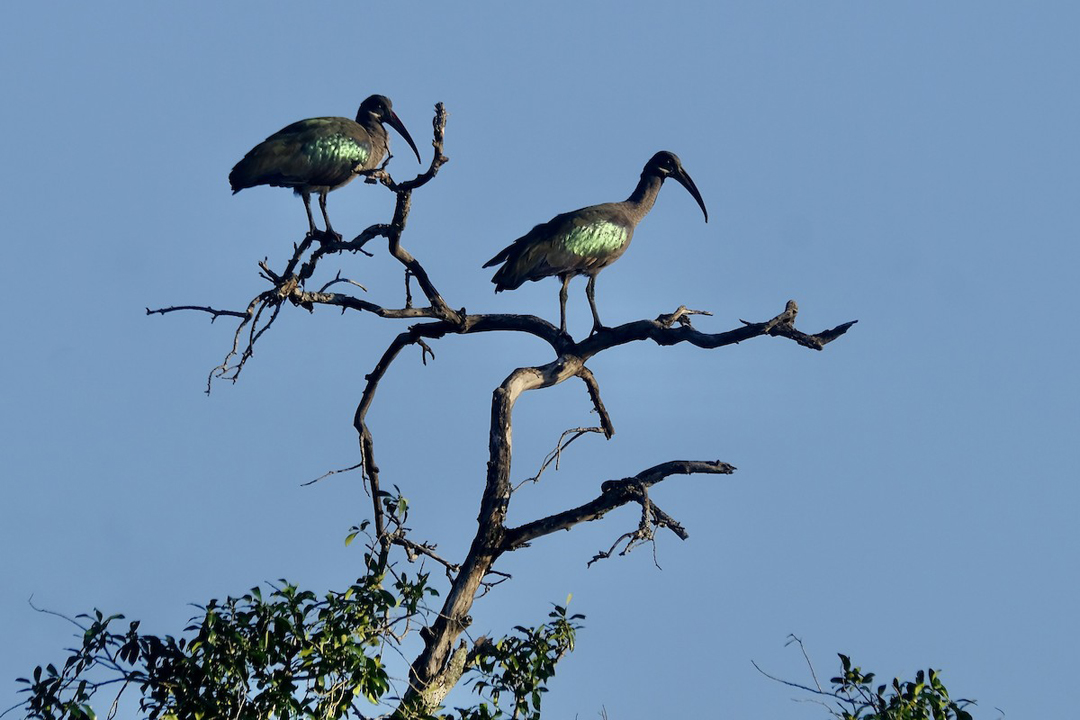Social Structure
Like other ibises, Hadada ibises are gregarious birds that can form flocks of up to 200 individuals, although it is more commonly found in groups of 5 to 30.
Communication
The loud and harsh calls of Hadada ibises can be heard year-round, particularly at dawn and dusk, when they are leaving or returning to their roosts.
Behavior
After leaving their roosts to forage, the birds are quiet. They are noted for probing the mud in shallow water with their long bills to feel for food; they also hunt in or near crop fields, where the holes they create in the ground as they search for prey help aerate the soil.
Conservation
Least concern
Diet
Hadada ibises consume a range of insects, including flies and beetles, as well as other invertebrates, small reptiles, and frogs.
Breeding
Able to breed year-round, Hadada ibises may sometimes produce four broods a year. They are solitary and monogamous nesters that can develop a preference for the same nesting site. Females build tree nests from sticks and twigs and then line them with grass or other soft material. Both parents incubate the eggs, and chicks leave the nest around a month after they hatch, but still depend on their parents for a few months.
Friends & Foes
African crowned eagles and black sparrowhawks both prey on adult birds, while genets, monkeys, and monitor lizards prey on chicks and eggs.
Population in Kenya
Hadada ibises are found throughout Kenya.
Range & Habitat
These birds are Africa’s most common ibis and are found throughout much of sub-Saharan Africa.
They frequent a variety of habitats, including savanna, wetlands, beaches, woodlands, fields, parks, and gardens. They are comfortable with habitats that have been modified by humans.

